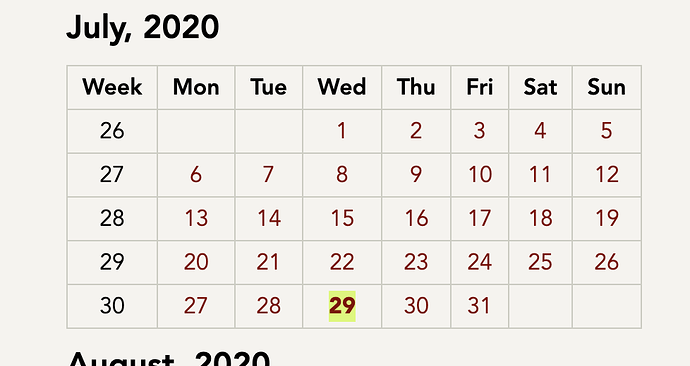I used to work with Dynalist (  ) a lot to log my work on a daily basis (meetings, ideas, readings, …) and I’ve structured it as a calendar log with folding weeks, months, years that helped me quickly “zoom in” a specific period of time and dive in by unfolding lists then zoom out by folding them again.
) a lot to log my work on a daily basis (meetings, ideas, readings, …) and I’ve structured it as a calendar log with folding weeks, months, years that helped me quickly “zoom in” a specific period of time and dive in by unfolding lists then zoom out by folding them again.
I also used it a lot to keep track of my tasks with a system of tags to match my own workflow.
I’ve started to use Obsidian a couple of weeks ago and it changed the way I organise my ideas. It really helps me to understand complex topics better by breaking them into atomic notes and connecting them.
So I’ve quickly decided to try to completely switch from dynalist to obsidian and try to extend its usage to a productivity tool.
The two things that I’ve struggled the most with were : an easy way to navigate in time and a way to manage tasks to accommodate with Obsidian current features.
After a couple of trials and fails I’ve achieve to find a way of working with Obsidian that suits my needs. I combine the daily note plugin, the zettelkasten note plugin and a Calendar note
The Daily note:
I use the daily note plugin with a date format like: YYYY MM DD, this way my daily notes are sorted by date in their folder. The template I use is still not perfect but it has on the top of it a link to the Calendar note that I’ll explain later, a Task section and a list section of 30 minute time blocks
let’s explain the sections from bottom to top
The 30 minute blocks “section”:
Here I keep track of meetings that don’t require a dedicated note (very simple idea).
If an idea becomes big enough I will eventually turn it into a dedicated note and put the backlink in the 30 minute block so that I keep track of “when” I’ve worked on that idea.
That’s how it looks like
The “task” section:
I use tags a lot. But due to way Obsidian works with files instead of blocks, when you click on a tag, the context of the tag in the search pane is too “heavy” for me because it takes a lot more than a single sentence: it takes all lines of text below it.
When I click on my #todo I just want to see the sentence that is after the tag to keep the search results as condensed as possible.
That’s where Zettelkasten notes come into play for me: I’ve turned on the Zettelkasten plugin and created a task folder to store them.
Whenever I have a task that I want to mark as “todo” I create a new Zettelkasten note, put a #todo tag at the beginning and briefly describe the task:
That’s what it looks like
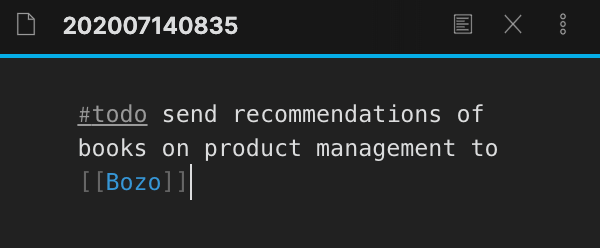
I copy the title of this note and paste it where I want this task to appear: most of the time it’s in the “Task” section of my daily note.
When I hover the title of the zettelkasten note I can see the detail of the task
I would prefer to have a system that can embed this note directly but that okayish for the moment.
That’s 3 actions instead of just writing directly the “#todo do some stuff” in the task block but I’m okay with that for 3 reasons. First, I don’t record a lot of tasks todo (5 tops per day), so it’s no use to automate a lot. Second, when I work on a task, it often transforms into a more developed note (like meeting notes, ideas, links to other notes…), so with this system the “container” is ready “upfront” and I don’t have to decide whether I should create a dedicated note or not: it’s already done. Third and most important, when I click on the #todo in the tag pane, the search result just show me the tasks itself like this:
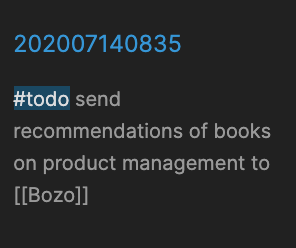
I find it much more readable than the todo tag showing up in the middle of a bunch of words if I would have put a #todo tag directly inside my daily note, leading to this kind of result which I find clumsy
Last the Calendar section:
it’s simply a link to the calendar note
The Calendar note
I’ve seen really cool posts explaining how to create breadcrumbs to navigate between dates. Here is how I manage date navigation in Obsidian: I’ve simply created a calendar note containing links to all past and future daily notes.
Here is the file if you’re interested in using it Calendar.md.zip (790 Bytes) .
You have to use the same date format YYYY MM DD as I do unless it won’t work. If you want to create your own it super easy with an excel formula because typing it in the Obsidian editor in markdown mode would be very hard.
I really think Obsidian team is doing a great work and that this product is brilliant. Congratulations to them.
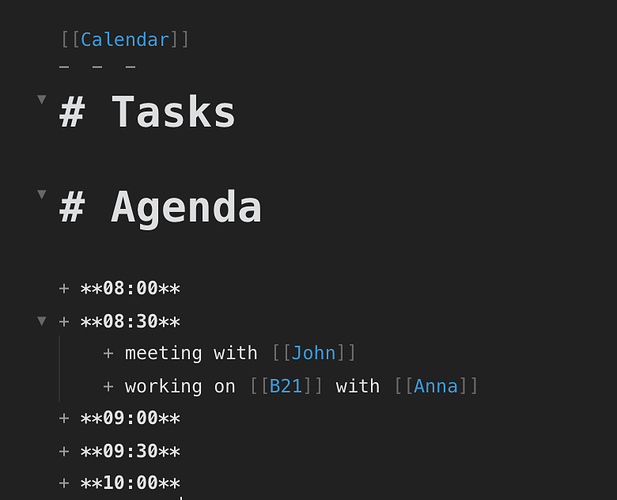

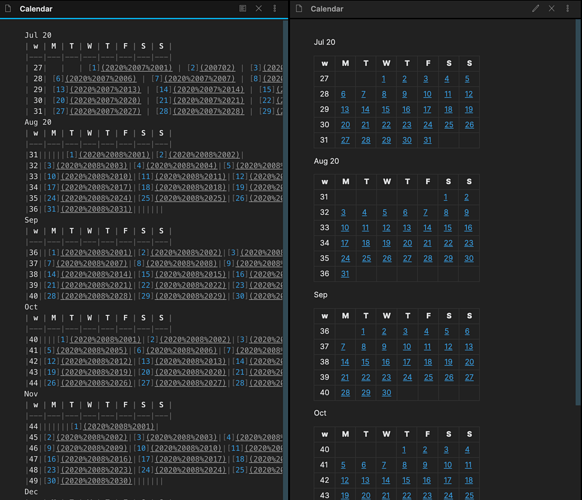
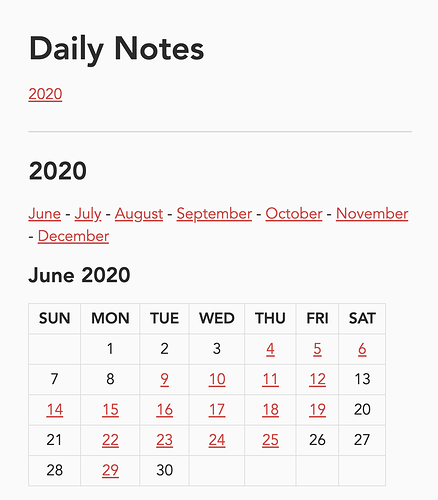
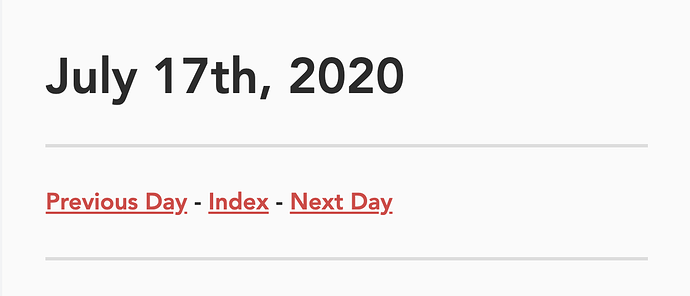
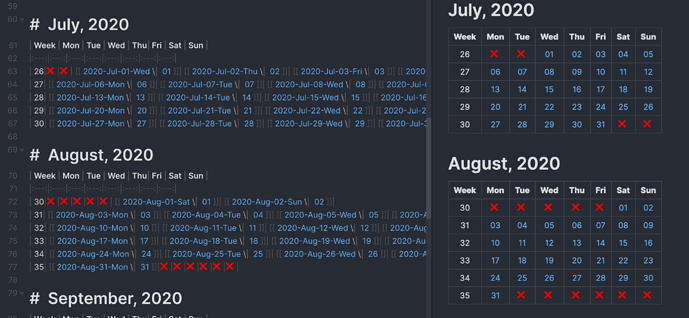

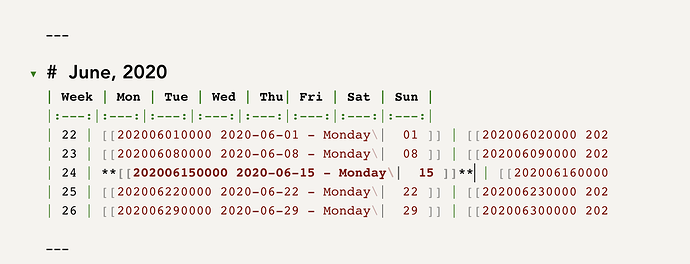
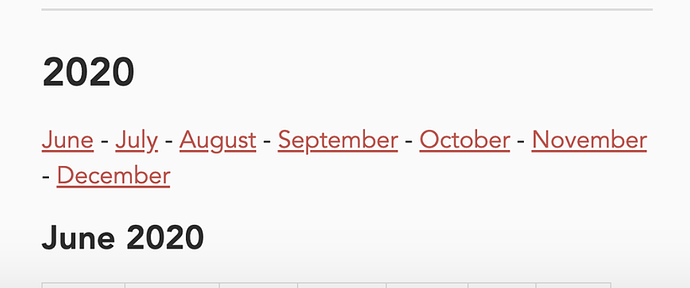

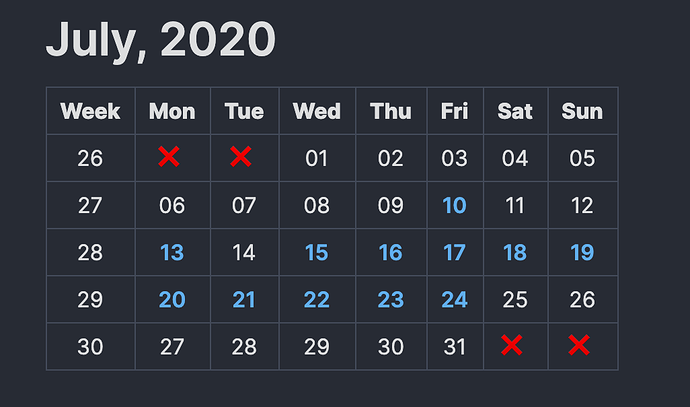
 I do hope more people take a look at this and ponder additional options. This seems like a very good prototype proof of concept approach for a calendar daily note plugin.
I do hope more people take a look at this and ponder additional options. This seems like a very good prototype proof of concept approach for a calendar daily note plugin.